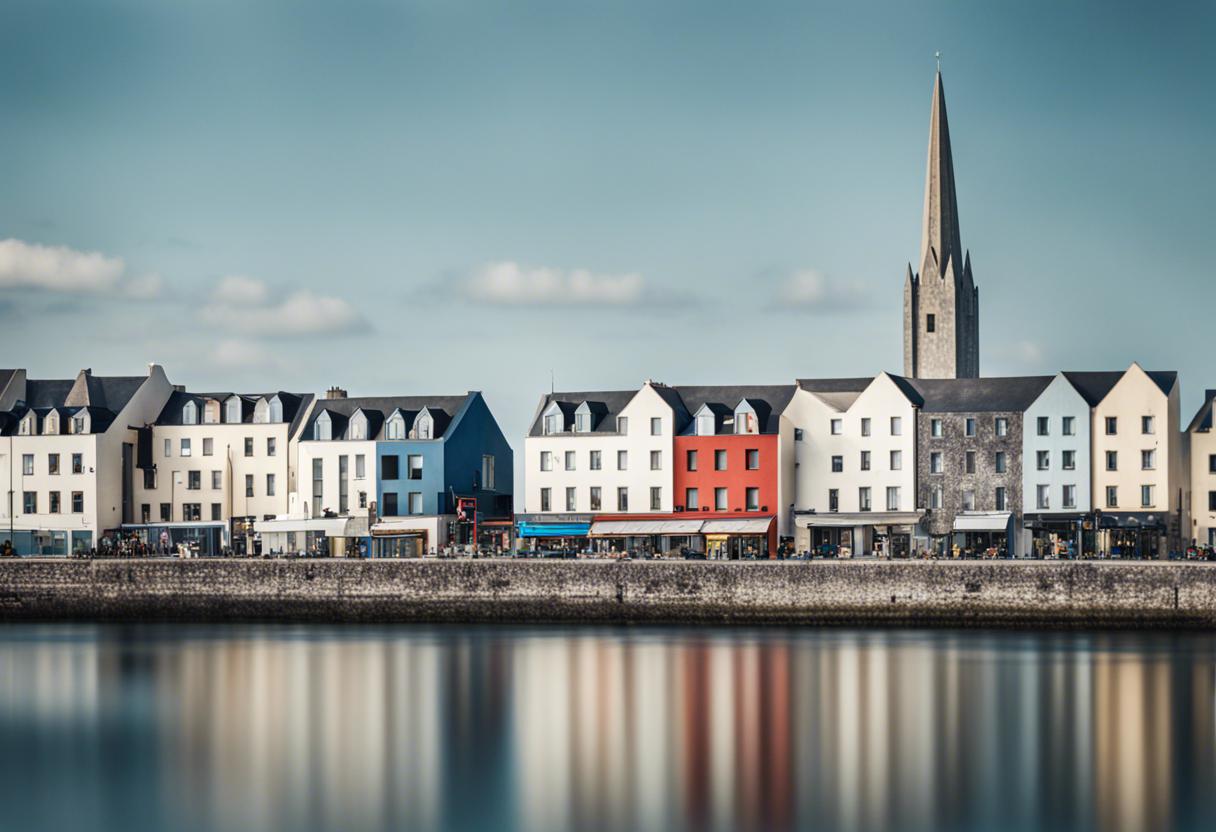This summer, Irish heritage will be recognised in a quite unique way, thanks to Galway Civic Trust’s brief promotion of an event with Michael McGrath, the supposed “archdruid” of Tara and Ireland. Not just a druid, McGrath also traces his lineage back to the Eyres of Eyre Square, offering an added local layer to his tale. The event was to be part of Heritage Week, commencing next week in Galway and many other locales soon after.
There lies a complication though; McGrath might be categorised as an unusual kind of history enthusiast. In the recently-held local elections in Kilkenny, he spoke about presenting “a unique understanding of our cultural roots and the profound knowledge that can guide us toward a harmonious future”. He also made it publicly known that he declined Hermann Kelly’s Irish Freedom Party’s invitation in order to stay an Independent.
Moreover, he confirmed that he was once the subject of an unfounded allegation of being a member of a Nazi group – an accusation he maintains he has successfully tackled.
In 2005, however, amid a controversy concerning the path of a road skirting the royal mounds at Tara in County Meath, McGrath confessed in a letter to the Times of London that until 1938, he viewed Hitler as a genius, until he allegedly descended into madness and initiated the Holocaust.
In addition to commending certain parts of Third Reich’s economic policies, he revealed that he had formerly held the position of ‘officer’ in an Irish Nationalist Socialist group.
Indeed, in 1988, a document was presented to the Oireachtas by senator David Norris that was signed by Michael J McGrath of Kilkenny, titled “Chief Lieutenant, National Socialist Party”. The document, “National Socialist Party: Smash Aids Blitzkrieg”, pledged, among other things, to demolish “suspect discos” and incarcerate homosexuals for a 10-year period.
The local organisers informed that McGrath had to step back from the Galway talk owing to personal circumstances.
Flare Phenomenon in Dublin Football
The night sky over Dublin’s Docklands was painted red on Wednesday evening as red flares erupted, courtesy of international supporters of Mouloudia Club de Alger marking the Algerian football team’s 103rd anniversary. Similar light exhibitions were experienced near St Paul’s at the Millennium Bridge in London and even in Algiers itself. Best wishes to the MC Alger, the champions of Algeria eight times over. However, this raises concerns for the FAI, hoping the event doesn’t enthuse fans of Dublin clubs. Over the last year, flare-showing at football matches has spiked, resulting in worry within the League of Ireland. Post a player conflict with city rivals St Patrick’s Athletic at Richmond Park, Bohemians received a penalty and a ban from the stadium for one match. Others reprimanded include Shelbourne, Shamrock Rovers, Derry, and Dundalk.
Kneecap Reviews Make Waves in America
The American critics have collectively reviewed Kneecap, the republican Gaeilgeoir hip-hop fictionalised bio-picture set in post-Belfast Agreement Belfast. The New York Times finds the main characters “authentically unhinged and amusingly decadent”. Conversely, the Boston Globe believes the film is just a comedy depicting class discrimination. The Winnipeg Free Press praised it, calling it “one of the greatest drug films since Trainspotting”. Meanwhile, the San Francisco Chronicle believes it’s a film enjoyable by all, regardless of understanding its references or dialogues.
Remuneration Decrease for Fair City Photographer
RTÉ had to withdraw the offer for taking still images to publicise its principal soap, Fair City, due to its governance crisis last year.
Three days following the dissemination of a press announcement showcasing an available opportunity, the broadcasting entity succumbed to influences and said it resolved to “halt the tender process and reflect on the amount of photography requisites and term of contract, amongst other factors.”
The legendary contract has returned. Previously, it requested at least 14 still imagers, it now requires 12. The notorious Fair City is not explicitly identified among the ‘diverse RTÉ productions’ under scrutiny, although the indicative picture list does incorporate one where “Dolores, Pete, Renee and Bob hark back to essential moments in their lives unfurling in McCoy’s” which is slightly revealing. The cost has been reduced too: it is €50,000 annually for 50 weeks, which means an average of 20 hours on set, rather than €60,000.
In RTÉ’s new epoch, monetary value is paramount.
When will the new family court complex of Dublin emerge from the quagmire?
The unoccupied lot, known as one of Dublin’s most recognisable, the deserted block projected to be the location of the new family courts complex in Dublin 1, has made another minuscule advancement towards the establishment of the actual foundations. The residents of Smithfield have seen the city’s unintended park – referred to as ‘the pit’ or ‘the swamp’ dependent on the season – morph over seasons.
The property was acquired in the late 1990s, and was projected to be completed in 2020 back in 2014. The ministers conducted a market inauguration for the public-private collaboration project this week. “Hammond Lane will supersede the inadequate facilities found at Dolphin House, Phoenix House, and Chancery Street Courthouse” the Minister for Justice, Helen McEntee, stated. “Once completed, it will be secured for future generations and stand as a significant monument in Ireland’s legal framework for the foreseeable future.”
So when will the construction commence? The current plan is underway with a starting date in 2026 and an end date projected in 2028.

